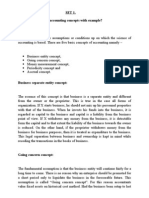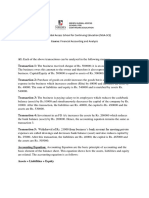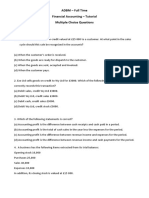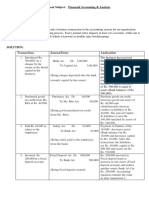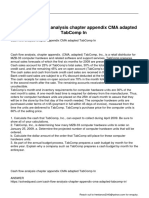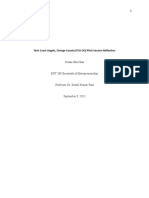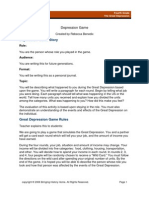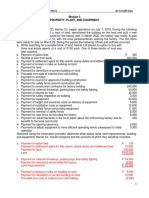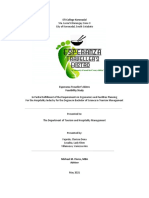0% found this document useful (0 votes)
45 views10 pagesFinancial Accounting Analysis
The accounting equation states that a company's total assets are equal to the sum of its liabilities and shareholders' equity. It shows the relationship between these parts of the company's balance sheet and ensures the balance sheet remains balanced. The equation is represented as: Assets = Liabilities + Shareholders' Equity. Revenue is the total income generated before expenses and is located at the top of the income statement. Operating income is revenue minus regular operating expenses and shows a company's profit from core business operations. The difference between revenue and operating income can indicate a company's financial health.
Uploaded by
Rohit GangurdeCopyright
© © All Rights Reserved
We take content rights seriously. If you suspect this is your content, claim it here.
Available Formats
Download as DOC, PDF, TXT or read online on Scribd
0% found this document useful (0 votes)
45 views10 pagesFinancial Accounting Analysis
The accounting equation states that a company's total assets are equal to the sum of its liabilities and shareholders' equity. It shows the relationship between these parts of the company's balance sheet and ensures the balance sheet remains balanced. The equation is represented as: Assets = Liabilities + Shareholders' Equity. Revenue is the total income generated before expenses and is located at the top of the income statement. Operating income is revenue minus regular operating expenses and shows a company's profit from core business operations. The difference between revenue and operating income can indicate a company's financial health.
Uploaded by
Rohit GangurdeCopyright
© © All Rights Reserved
We take content rights seriously. If you suspect this is your content, claim it here.
Available Formats
Download as DOC, PDF, TXT or read online on Scribd
/ 10






